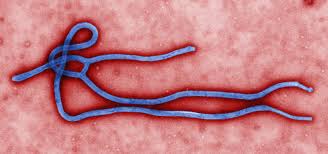September is National Cholesterol Education Month and I was asked to look into whether this heart health marker can be measured from dried blood spots. But first I needed to understand what is actually measured when cholesterol levels are reported.
Everyone knows LDL cholesterol, often referred to as the “bad” cholesterol, and HDL cholesterol, referred to as the “good” cholesterol. But what exactly are these substances. It turns out that LDL and HDL are various forms of lipoproteins which transport cholesterol through the blood system. Cholesterol itself is a necessary component of cell membranes and getting this to the cells is a function of the low density lipoprotein (LDL). However, too much of this species has been found to lead to coronary heart disease. Thus the need to monitor.
The CDC has published its guidelines(1) for the analysis of the various forms of cholesterol in plasma. Total cholesterol (TC) is determined by a modification of the original Abell-Kendall method reported in 1952(2).
HDL-cholesterol (HDL-C) is determined through a series of steps, including a 16 hour ultracentrifugaton, selective precipitation of non-HDL-C lipoproteins using manganese and heparin, and then the remaining cholesterol is quantitated by the Abell-Kendall method mentioned above.
LDL-cholesterol (LDL-C) is calculated from the beta-quantitation; LDL-C = TC – HDL-C, where TC in this case is the total cholesterol measured in the bottom fraction after the HDL-C ultracentrafuge step above.
However, most laboratories have been reporting LDL-C concentrations using the Friedewald equation(3) (see Eq. 1 below). This procedure skips the ultracentrifugation step and requires a) determining the total cholesterol present in plasma, b) obtaining the HDL-C by precipitation of all non-HDL-C lipoproteins and c) measuring the triglycerides (TG) concentration. The triglyceride concentration is used to estimate other cholesterol containing components in plasma, which has historically been found to be 5 to 1. The Friedewald equation is:
Eq. 1) LDL-C = TC – HDL-C – 0.2xTG
The current CDC standard recommends a GC-MS method be used for measuring TG concentration. This method involves hydrolysis of the fatty acid esters of glycerol, evaporation of solvent, derivatization, extraction and analysis by GC-MS.
So how is this working for dried blood spots? There are a number of methods listed in the DBS database at Spot On Sciences’ web site. Some involve GC-MS, some used the cholesterol oxidase/p-aminophenazone method and triglycerides by the glycerophosphate oxidase-peroxidase/aminophenazone method but an equal number involve LC-MS/MS. One thing to notice though is that these methods measure only the total cholesterol present in the dried blood spot. There is as yet no report of a separation of the various complexes that are important to the individual.
http://www.nhlbi.nih.gov/files/docs/guidelines/atglance.pdf
- http://www.cdc.gov/labstandards/lsp_methods.html
- LL Abell, BB Levy, BB Brodie and FE Kendall, J. Biol Chem, 1952; 195:357-66.
- WT Friedewald, RI Levy and DS Fredrickson, Clin Chem. 1972 (6) 499-502.
- Wilson PW,Zech LA,Gregg RE,Schaefer EJ,Hoeg JM,Sprecher DL,Brewer HB Jr.,Clin Chim Acta.1985 Oct 15;151(3):285-91.
- G.Miller, et.al., Clinical Chemistry 2010 56:6, 977-986.













